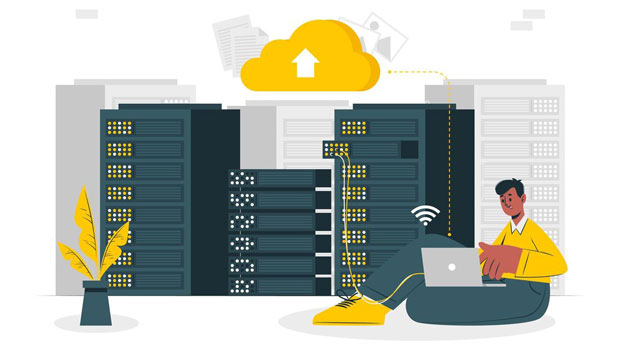In today’s rapidly evolving business environment, efficient data collection is crucial for organizations to stay competitive. The py s5 Manager Client has emerged as the top choice for enterprises looking for a robust, scalable, and efficient solution to collect, manage, and analyze their data. This software provides seamless integration, real-time data collection, and powerful analytics tools, which makes it an indispensable tool for businesses across various sectors. In this article, we will explore why the PY S5 Manager Client stands out as the preferred option for enterprise-level data collection, analyzing its features, benefits, and value to customers. Introduction to PY S5 Manager ClientThe PY S5 Manager Client is a sophisticated and powerful tool designed specifically for enterprises seeking to optimize their data collection processes. It allows businesses to automate the gathering of data from various sources and convert it into actionable insights. Unlike traditional data collection tools, the PY S5 Manager Client excels in handling large volumes of data, ensuring accuracy, and offering real-time processing capabilities. Its user-friendly interface, integration with existing systems, and customizable features make it a comprehensive solution for businesses in diverse industries.Key Features of PY S5 Manager Client1. Real-Time Data Collection and Processing One of the key reasons why the PY S5 Manager Client is the top choice for enterprise data collection is its real-time data collection and processing capabilities. In today’s fast-paced business world, making decisions based on up-to-date information is essential. The software ensures that businesses can collect and process data in real time, eliminating the delays that often occur with traditional data collection methods. Whether it's monitoring production line performance, customer interactions, or sales data, the PY S5 Manager Client provides immediate insights that help businesses make informed decisions quickly.2. Scalability and Flexibility As organizations grow, so do their data collection needs. The PY S5 Manager Client is highly scalable, meaning it can handle increasing volumes of data without compromising performance. It can be customized to suit the specific requirements of a business, whether it is a small startup or a large enterprise. This scalability ensures that companies can continue to use the software as they expand, without the need for expensive upgrades or system replacements.3. Integration with Existing Systems For any enterprise, the ability to integrate new software with existing systems is crucial. The PY S5 Manager Client supports seamless integration with a wide range of third-party software, including enterprise resource planning (ERP) systems, customer relationship management (CRM) platforms, and other business tools. This ensures that companies do not have to disrupt their existing workflows and can continue using their current systems alongside the PY S5 Manager Client.4. Data Security and Compliance Data security is a top priority for enterprises, particularly when handling sensitive information. The PY S5 Manager Client includes robust security features such as encryption, access control, and data integrity checks to protect the data from unauthorized access and tampering. Additionally, it complies with various industry standards and regulations, ensuring that businesses remain in compliance with legal and ethical requirements when collecting and storing data.Benefits of PY S5 Manager Client for Enterprises1. Improved Decision-Making One of the most significant benefits of using the PY S5 Manager Client is the improvement in decision-making. By providing real-time, accurate data, businesses can make more informed decisions that directly impact their operations. The software’s analytics tools allow enterprises to identify trends, monitor performance, and predict future outcomes, which helps in strategizing and optimizing business operations.2. Increased Efficiency Traditional data collection methods often involve manual processes that are time-consuming and error-prone. The PY S5 Manager Client automates many of these tasks, freeing up valuable time for employees to focus on more strategic activities. Automation also reduces the likelihood of human error, leading to more accurate data and higher operational efficiency.3. Cost-Effectiveness Although investing in a high-quality data collection tool like the PY S5 Manager Client requires an initial expenditure, the long-term cost savings are significant. By streamlining data collection processes, reducing errors, and providing valuable insights into business operations, companies can reduce overhead costs and improve profitability. Furthermore, the scalability of the software means businesses can continue using it as they grow, avoiding costly system upgrades or replacements.4. Better Customer Insights The PY S5 Manager Client helps businesses collect data from various customer touchpoints, providing a comprehensive view of customer behaviors, preferences, and feedback. This enables companies to personalize their offerings, improve customer experiences, and ultimately build stronger customer relationships. Whether through customer surveys, purchase histories, or social media interactions, the software helps businesses gain a deeper understanding of their customer base.5. Enhanced Data Accuracy The PY S5 Manager Client minimizes the risk of errors that are often associated with manual data entry. By automating data collection, the software ensures that the data collected is accurate and reliable. This enhances the overall quality of the data, making it more valuable for analysis and decision-making. Businesses can trust the data they collect to drive their strategies and operations.Why PY S5 Manager Client is the Right Choice for EnterprisesThe PY S5 Manager Client is designed to meet the complex data collection needs of modern enterprises. Its combination of real-time data processing, scalability, integration capabilities, and security features makes it the ideal choice for businesses looking to improve their data collection and management processes. The software’s ability to provide accurate, up-to-date information enables companies to make more informed decisions, increase operational efficiency, and gain a competitive edge in the market.Additionally, its user-friendly interface and customizable features ensure that businesses of all sizes can use the software effectively. Whether it is an organization looking to optimize its internal processes, improve customer experiences, or analyze industry trends, the PY S5 Manager Client offers the tools and capabilities to help businesses achieve their goals.In conclusion, the PY S5 Manager Client is a powerful and flexible tool that provides significant value to enterprises in their data collection efforts. Its real-time data collection, scalability, seamless integration, and robust security make it the go-to solution for organizations of all sizes. With the ability to improve decision-making, enhance operational efficiency, and provide better insights into customer behavior, the PY S5 Manager Client is an indispensable asset for any enterprise looking to thrive in today’s data-driven world. By investing in this software, businesses can ensure they stay ahead of the competition and make the most of their data.
Nov 14, 2025



































































